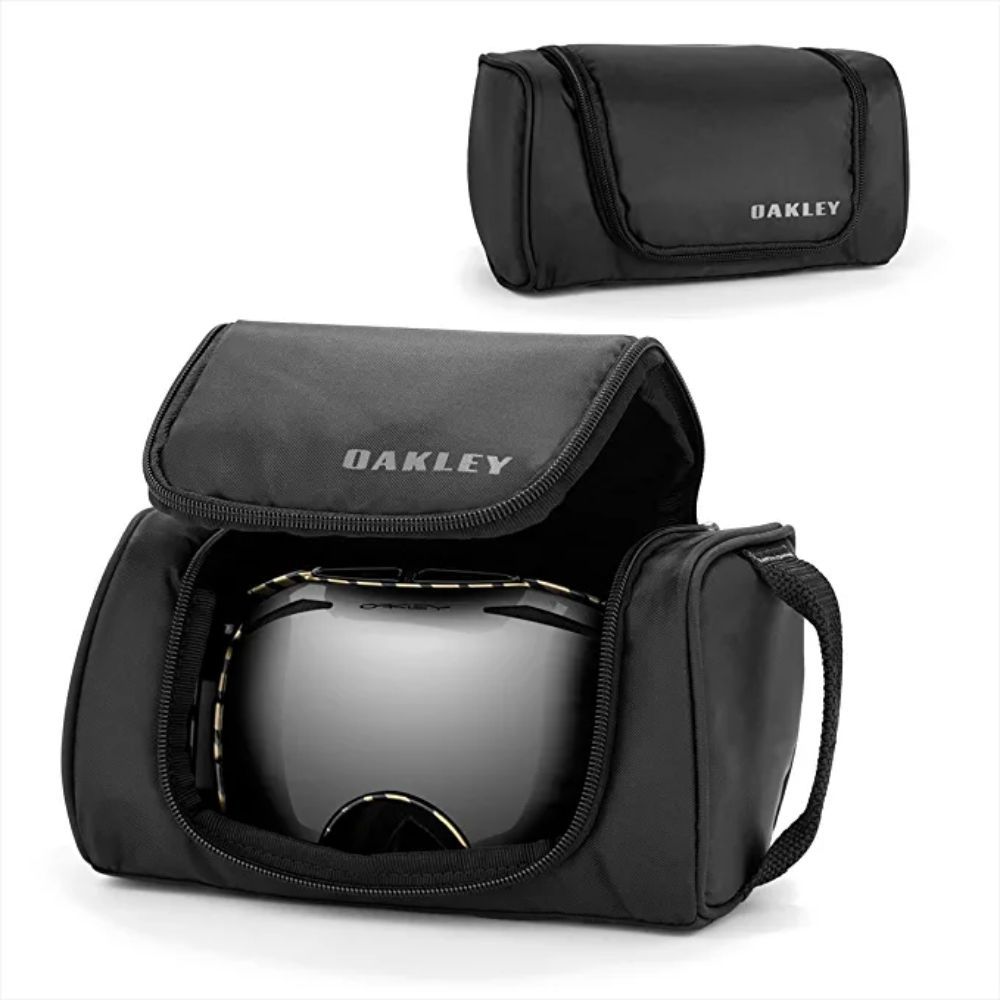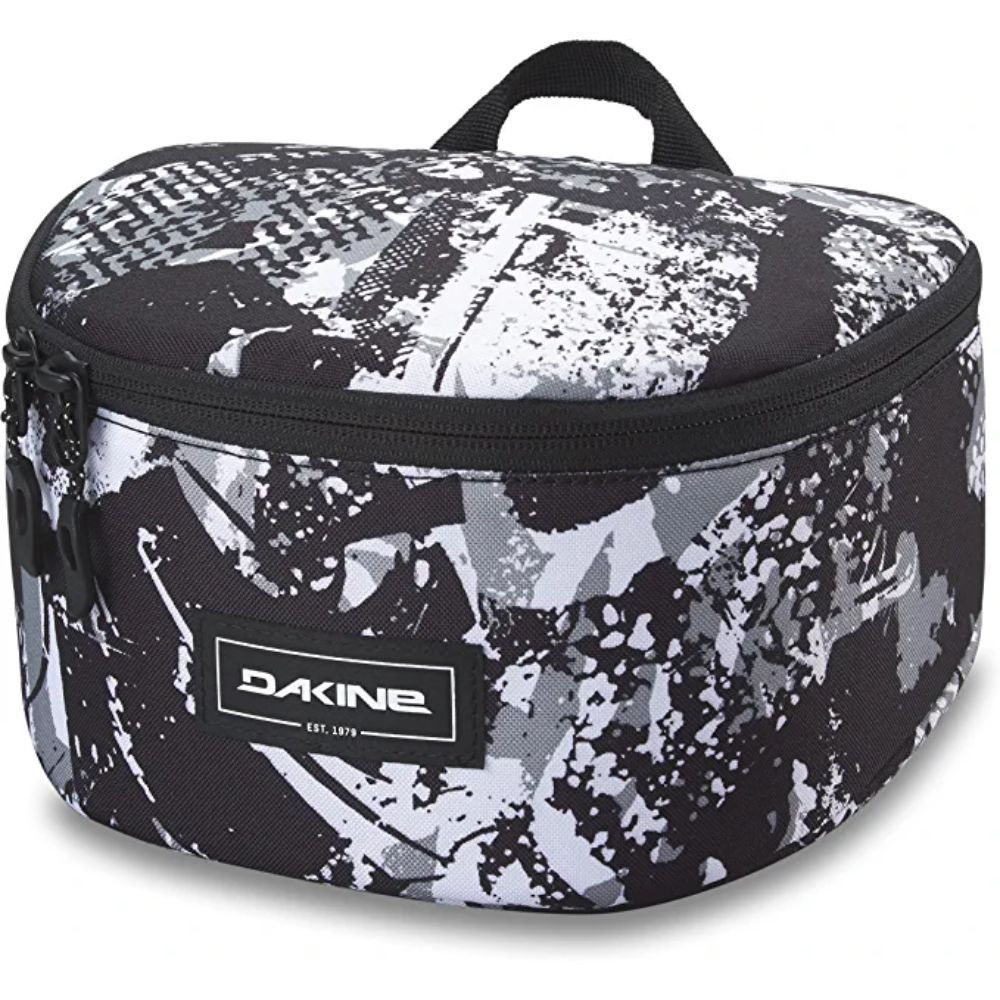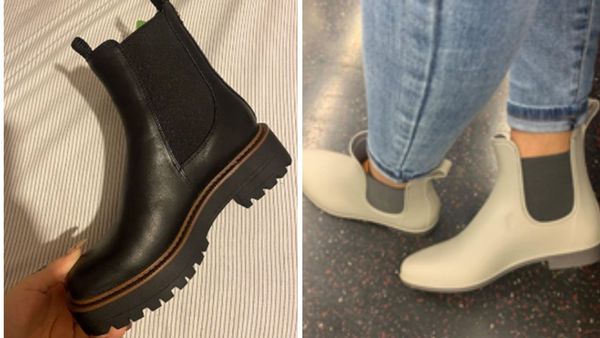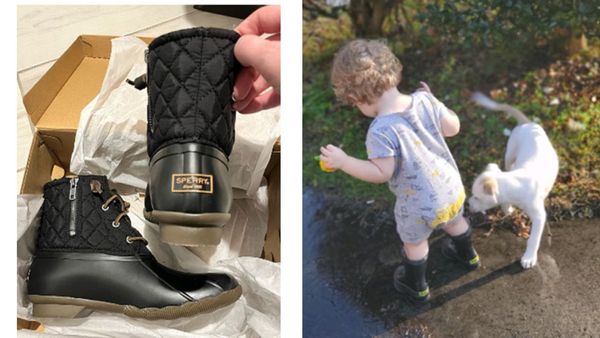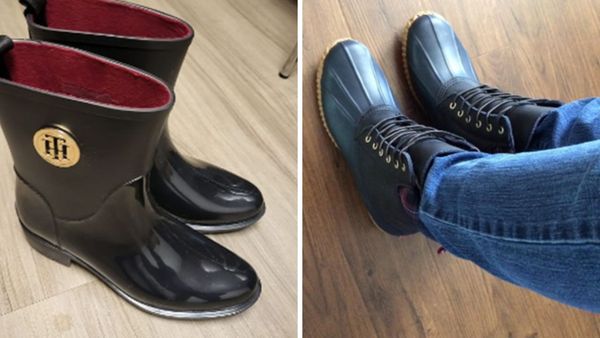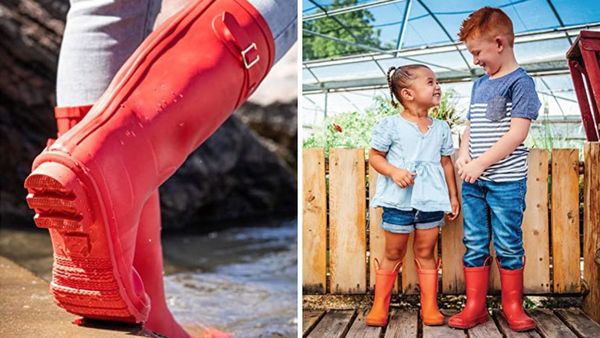Ski goggle covers - did you know they existed?
Most people don't think about ski goggle covers until it's too late. But if you want to keep your goggles in perfect condition all season long, a cover is the best way to do it!
A good ski goggle cover will protect your goggles from scratches, water damage, and even UV rays. Plus, they're easy to use and come in a variety of colors and styles. So why not pick up a few for this season? You'll be glad you did!
Check out our selection of the top ski goggle covers you can buy on Amazon today!
How We Choose
It's no secret that ski goggles can take a beating on the slopes. But who has time to constantly be cleaning and repairing their goggles?
Not only do you have to worry about keeping your goggles in good condition, but if you don't have a good pair of ski goggle covers, then you're constantly battling the cold and wind.
Our team has put together a list of the best ski goggle covers for scratch protection and durability. With our picks, you'll be able to keep your goggles in great condition all season long!
We hope you will discover your next great find from the products we’ve listed in this article. As an Amazon affiliate, we do earn commissions from qualifying purchases. However, each of our recommendations is our own and has been chosen with love and care. Enjoy finding your favorite supplies and equipment for your someday to your everyday!

The Greatest Microfiber Ski Goggle Cover
GOGGLESOC Microfiber Protective Goggle Cover
Why It's Great
Introducing the GOGGLESOC Microfiber Protective Goggle Cover! The ultimate way to express yourself and keep your ski goggles safe on the slopes. Show off your creative style with their range of vibrant and eye-conic artist-created designs! Not only do these ski goggle covers look chic, but they also help to protect your lenses for a crystal-clear view each time you hit the mountain.
Plus, getting them on is effortless, even with gloved hands – just pull it over with ease and be ready to go in no time! So go ahead – show off your own personality while you're shredding down the slopes this season with a GOGGLESOC Microfiber Protective Goggle Cover!
Buyer Considerations
If you’re looking for an eco-friendly ski goggle cover that will keep your lenses clean and scratch-free, then the perfect ski and snowboarding accessory is here!
These stretchy microfiber ski goggle covers are made with 88% recycled plastic bottles (aka rPET). So not only will you feel good about reducing your environmental impact, but you can also choose from loads of fun designs and colors - all of which are machine washable too. So, what are you waiting for? Make a ski trip splash with your very own ski goggle cover!
Why It's Great
Introducing the Hanperal Large Hard Sports Glasses Case! The ultimate in protective storage for your ski goggles. It's like a large, hard hug for your beloved spectacles. Unmatched in size and versatility plus enough internal space for even the bulkiest of goggles!
And if you happen to be an outdoor enthusiast, this special case comes with a sturdy hook so you can attach it directly to your waist while adventuring. Like a sidekick but made of stronger stuff—say goodbye to fumbling around your bag looking for that all-important eye protection.
Add to that a smooth and durable zipper and presto…your goggles are secure, snug, and ready for whatever life throws at you! With all these features, why wait? Get the Hanperal Hard Sports Glasses Case today and take your eyewear adventures to the next level!
Buyer Considerations
Take ski goggle protection to the next level with this ski goggle cover! Constructed from durable EVA with a comfortable interior lining, you'll never have to worry about bumps, dents, or scratches on your ski goggles again.
This ski goggle cover was designed to be concave and convex at different levels - making sure that all ski goggles get that perfect snug fit. And don't worry about finding a case that's too small - at approximately 9.45 x 5.55 x 3.94 inches, this ski goggle case is designed for a universal fit! Protect your goggles like a pro with this ski goggle case!
Why It's Great
Protect your precious Oakley goggles from wear and tear with the Oakley Universal Soft Goggle Case! This retractable case fits all models of Oakley goggles, so you don't have to remember which ones it fits. Forget having to carry them around in a bag or struggling to find space to store them safely - this is designed just for your needs.
The soft, luxurious fleece lining ensures that your goggles won't get scratched while they're being stored away. Plus, the dual vent ports are designed to help make sure there's no extra moisture buildup while they're stored.
And guess what? They even added a handy storage pocket inside - in case you want to store other important goggle-related items too. All of this in one expandable mesh package - now THAT'S convenience! So, don't let yourself stress about how you're going to transport and store your Oakley goggles - let the Oakley Universal Soft Goggle Case do all the work for you!
Buyer Considerations
Ready to ski? The ski goggle cover is the perfect accessory to take on your ski trips. This lightweight soft-shell case is crafted from tough nylon and can handle abuse so you don't have to worry about it getting damaged when you put it in your ski bag. With a wide hatch and a zip closure, plus a convenient carrying strap, this case makes it easy to transport your ski goggles—it even fits extra lenses in addition to the pair of goggles! No more fumbling around trying to get all your ski gear out of the bag; the zipper opens up nice and wide so you can just grab what you need quickly. Who says ski gear has to be complicated?
Why It's Great
Are you always looking for an extra way to store your goggles when you’re on the go? How about something totally unique and funky to help you stand out? That’s where the Dakine Goggle Stash Storage Case comes in!
Made with the same commitment to sustainability that we’ve come to expect from Dakine, it’s constructed using recycled materials. It also features increasingly plastic-free and compostable packaging, so it's good for the environment too.
This stylish storage case isn't just practical; it'll make a real statement. It's fully padded and fleece-lined for maximum protection, plus there are extra lens sleeves available should you need them. Taking breathability one step further, there is even a mesh vent so your goggles can breathe too! And don't forget the fun prints and colors; no two goggle cases will ever be alike!
So, whether you need a place to store your goggles or just want a fun accessory that will always draw attention, the Dakine Goggle Stash Storage Case is just what the mountains ordered!
Buyer Considerations
Whether you ski, snowboard, or both, there's no denying that ski goggle covers are essential if you want to keep your goggles and extra lenses scratch-free. So why compromise on quality? This ski goggle cover is made with 600D Polyester which means ultimate protection for your precious ski gear.
Not only is it incredibly sturdy, but it also fits 1 pair of ski goggles and extra lenses, making sure all your ski must-haves stay safe when you're zooming down the slopes. Of course, looks matter too - make a statement while protecting your ski goggle set!
Ski Goggle Frequently Asked Questions:
Skiing can be a lot of fun, but it's also very dangerous.
One of the most important pieces of safety gear you can wear while skiing is a good pair of ski goggles.
But even the best ski goggles can get damaged if they're not protected. That's where ski goggle covers come in. They protect your goggles from scratches, dust, and other debris that can damage them. But with so many on the market, it can be difficult to know which one is worth buying. Not to worry, we've got you covered. With answers to some of the most frequently asked questions, you'll be sure to find the perfect ski goggle cover for you.
Do I need a ski goggle cover?
Yes, you need a ski goggle cover. Ski goggles are an essential piece of equipment for winter sports like skiing and snowboarding. They protect your eyes from the elements, glare from the sun, and vision-impairing precipitation like snow or sleet.
Having a good quality ski goggle cover can add additional protection for your goggles and make sure they stay in great condition during all of your winter activities. A cover will keep them safe from scratches, dust buildup on the lenses, or other damage that could be caused by throwing them around carelessly while taking them off or putting them on between runs. Additionally, some covers come with anti-fog coatings that help extend the life of their lenses so you get better visibility while out there shredding down the slopes!
The most important benefit of having a ski goggle cover is that it can help keep them safe overnight while they’re not being used. It helps prevent any condensation buildup since many covers are made using breathable materials which allow airflow through but block out water droplets from entering in contact with the lens optics inside - ultimately ensuring no fogging occurs upon use when you're ready to hit those slopes again!
Do beginners need ski goggles?
Absolutely! Ski goggles are essential for protecting your eyes from any potential hazards you may encounter when skiing. While some people may be tempted to skip goggles, doing so is a mistake that could lead to serious damage if you're unlucky enough to hit something hard like a branch or piece of ice.
First and foremost, ski goggles protect against the wind. The cold temperatures and high speeds associated with skiing can be rough on your face and cause dryness as well as irritation. Goggles offer an extra layer of comfort by blocking out chilly air before it reaches your skin.
Additionally, having the right kind of ski goggle lenses (or even multiple pairs) increases visibility while snowboarding or skiing. On sunny days, mirrored lenses reduce glare while keeping things bright enough for you to see what's ahead without straining your eyes too much; on cloudy days, opt for yellow-tinted lenses that'll help make up for the lack of natural light and increase contrast between objects in the terrain such as trees and rocks; lastly, polarized lenses work great in all conditions but especially during extreme weather when moisture levels tend to be higher than usual — they block out much more intense reflections from flat surfaces such as ice patches which helps keep vision clear at all times.
Finally, remember that protective eyewear also guards against potentially dangerous objects flying through the air at high speeds (e.g., tree branches). Skiing down a mountain is risky no matter how experienced you are — safety strategies start with good vision and being protected by ski goggles first!
What goggles are best for skiing?
When it comes to finding the best goggles for skiing, there are a few key factors to keep in mind. Firstly, the best goggles for you will depend on your individual vision needs – meaning the type of lenses and coatings that are most suitable for you. Secondly, look out for a range of features such as anti-fogging capabilities, good visibility in different weather conditions (like sunny or snowy days), and a comfortable fit.
When looking into different types of ski goggle lenses and coatings – consider polarized lenses if you're skiing in bright conditions or mirrored lenses if you tend to ski in flat light conditions or on overcast days. Both these lens types reduce glare and enhance contrast so that you can see what's going on around you more clearly while skiing. Additionally, UV coating is essential as it helps protect your eyes from exposure to harsh UV rays which could cause eye fatigue further down the line.
In terms of features; look out for ski goggles with anti-fogging technology as fogging up can be distracting when skiing! Many brands have their own unique anti-fog technology so have a read through reviews before committing to any one pair of goggles. Additionally; look out for interchangeable straps which let you customize them according to your helmet size/type and preference - this helps ensure proper ventilation which makes all the difference! Last but not least; comfort is key – try various pairs at different stores till find one that fits well without feeling too tight around your face/head area so that they don't leave marks behind after long use periods like a whole day spent skiing!
Overall; it may take some time but investing wisely in quality ski goggles with appropriate lens type/coating combinations plus necessary features like good ventilation & an adjustable strap can make all the difference between having an enjoyable experience versus just an ordinary one next time you're hitting those slopes!
Can you ski with just glasses?
Absolutely! Skiing with just glasses is possible - in fact, many people wear their glasses while hitting the slopes. Not only does it protect your eyes from any debris like snow or dust, but it can also help you keep better track of your surroundings on the mountain.
When wearing glasses for skiing, there are a few key factors to consider:
1) Make sure you get glasses specifically designed for winter sports that are impact-resistant and have anti-fog lenses. These will that your vision remains clear and unobstructed during your ski session.
2) Ensure that they fit snugly on your face; an ill-fitting pair of specs can easily lose traction when exposed to high speeds or inclement weather conditions.
3) Don't forget to purchase a strap so that you can keep them securely attached to your head as you go down the hill. This is especially important if you have prescription lenses in case they fall off during extreme maneuvers (e.g., jumps).
4) Last but not least, don't forget about UV protection; exposure to intense sunlight at higher altitudes puts extra strain on our eyes and even more so if we're wearing regular lenses instead of polarized ones. So, make sure to invest in sunglasses or goggles made with 100% UVA/UVB protection!
So yes - skiing with just glasses is quite possible but remember safety first! Be smart and invest in some quality winter sports + accessories before tackling those slopes this season!
Are normal sunglasses OK for skiing?
No, normal sunglasses are not typically suitable for skiing. Regular sunglasses do nothing to protect your eyes from the elements while on the slopes; snow reflects a lot of light and can cause significant discomfort and damage to unprotected eyes. That's why it's important to wear ski goggles or specialized sunglass lenses when you go skiing—these have been designed specifically to give superior protection against harsh conditions like bright sunshine and high winds which can be present while skiing. Ski goggles offer UV ray protection, anti-fog features, scratch resistance, and strong impact resistance so they won't break easily in cold temperatures. Ski goggles also provide an extra layer of insulation around your eyes which helps reduce any windburn that might occur when you're speeding down the mountain or taking off after performing a trick. All in all, regular sunglasses just don't offer enough coverage or durability for proper eye protection while out on the slopes – so invest in some good quality ski goggles today!
What should I buy first when skiing?
Congratulations on taking up skiing! You may be wondering what items you should buy first to get started. To make the most out of your ski holiday, here are some must-have items for beginner skiers:
1. Skis and Boots: Before you can hit the slopes, you'll need a pair of skis and boots that match your experience level and physical abilities. It's best to purchase these from a specialty store so an expert can help fit them properly. Some rental packages also include both skis and boots if that is more convenient for you.
2). Ski Clothes: Once you have your equipment sorted out, it's time to put together an appropriate outfit for hitting the snow. Invest in quality thermals, a waterproof jacket/pants, some warm socks, gloves, or mittens, as well as a neck gaiter or balaclava for extra insulation against cold air and snowfall. Make sure all garments are designed specifically for winter sports activities; otherwise, they may not stand up to tough weather conditions experienced during skiing trips.
3). Goggles: Without proper eye protection from glare e caused by direct sunlight reflecting off snow surfaces, UV rays will hurt your eyes making long days on the slope unpleasant at best or hazardous at worst; quality goggles provide 100% UVA/B/C protection along with enhanced visibility in varying light conditions - important features especially when obstacles around hillsides suddenly appear when traveling downhill quickly!
4). Accessories: Complementing basics like those mentioned above are accessories like ski poles (for balance), helmets (which guarantee safety), warm hats & scarves (or other headgear) - which keep cold wind away while comforting ears & scalp during lift rides - plus sunglasses (especially if sunny environments prevail where one is enjoying winter sport activities). Additional add-on materials commonly purchased are waxes & tuning kits which allow users to maintain their boards' performance over time without having them serviced constantly by professionals – usually preferred among serious recreationalists who rely upon board agility even years after buying units initially!
Lastly don't forget about other standard day trip essentials like backpacks large enough capacity to store everything listed above including snacks & drinks since being outdoors during entire days requires sustenance fueling bodies throughout tiring bouts full speed action!
Does the color of ski goggles matter?
Absolutely! The color of your ski goggles matters a lot. Not only does the color affect visibility and your overall style on the slopes, but it can impact how well you’re protected from UV rays, sunlight, and other elements in the environment.
Different colors of ski goggles offer different benefits depending on the conditions you’ll be skiing in. For instance, let’s start with yellow-tinted lenses which are best for those who need improved visibility when skiing in low low-lighting such as fog or dusk. Yellow-tinted lenses help to reduce glare and make shapes stand out better so that rocks, trees, and dips in terrain become more visible.
Next, we come to rose/pink-tinted lenses which are great for bright bluebird days when there is plenty of sun exposure since their special hue enhances contrast even on sunny days by blocking certain wavelengths from reaching your eyes without darkening details too much like brown tints tend to do. Rose/pink tinting also works great for those who find themselves with redness or sensitivity due to extreme weather conditions because this tint helps relax eye strain after long hours spent outdoors exposed to cold temperatures or strong winds.
For green lens users out there - these shades work best for harsh sunlight or snow reflection because they help reduce brightness levels while still being able to keep enough detail intact (unlike grey tints). Green lenses have also shown some beneficial properties related to clarity such as reduced fogging due to their ability to cut reflected light indoors — making them a great choice for anyone looking to hit the slopes right after nightfall has dropped its curtain but before sunrise brings bright illumination again.
Finally, brown lens users benefit from increased definition across all levels of light since they enhance the contrast between midtones while still maintaining crisp accuracy throughout darker patches — making them perfect when searching through snow-covered lines where shadows can obscure vision rather quickly.
Ultimately though - whatever color lens you choose it should feel comfortable against your face when fully tightened up against your head during any ride down the mountain! So always make sure that whichever pair fits correctly with regards to lengths gets tossed into an overnight stay bag before heading back home or enjoying more safe & stylish skiing!
What color goggles are best for snow?
When choosing the best goggles for snowy conditions, you want to ensure you're getting a pair that offers both protection and good visibility. The most important factor is tint: lenses in either yellow or amber provide excellent contrast on overcast days and flat light, making them ideal for skiing and snowboarding. This tint provides enhanced depth perception so that even when the white snow reflects incoming light, your eyes will still be able to pick out the bumps and changes in terrain.
Beyond tint, look for polycarbonate lenses (rather than glass) as they are exceptionally scratch-resistant — a must-have since ski resort slopes tend to have plenty of rocks hidden under mounds of fluffy powder. Additionally, anti-fog coating ensures optimal visibility no matter how challenging the conditions get. If all else fails though, polarized lenses can help reduce glare when the sun peeks out from behind clouds; however, these tend to decrease peripheral vision so try them only if nothing else seems to work!
In terms of frame style and color selection, any dark neutral hue should do just fine but feel free to customize them with something more fun or adventurous depending on your personal preference! Ultimately what matters most is finding a pair of snow goggles that fits comfortably while providing adequate eye protection against wind chill and sunlight along with good visibility so don’t forget about those essential criteria as well!
Do you wear ski goggles inside or outside helmet?
It all depends on personal preference. Ski goggles should generally be worn inside the helmet for maximum protection, but some people may find it more comfortable to wear them outside. Here are a few key points to consider when deciding whether to wear ski goggles inside or outside of your helmet:
- Wearing goggles inside your helmet provides more coverage from wind, cold air, and, snow. This is especially important in sub-zero temperatures as it can help regulate body temperature by preventing frostbite and hypothermia.
- If you prefer wearing glasses rather than contacts, then wearing goggles outside of the helmet allows for better visibility since the frame won't be obstructed.
- Goggles that are secured with straps around your head will fit better against the contour of a helmet if they are worn on the outside, while a snugger fitting goggle can be achieved on the inside by using an adjustable strap built into most helmets.
- For maximum ventilation during strenuous exercise while skiing or snowboarding, wearing goggles outside may prove more beneficial due to increased airflow over your face and eyes.
No matter what you decide, however, make sure that whichever way you choose always provides great visibility when skiing or snowboarding so that you can enjoy winter sports safely!
Can I wear glasses under ski goggles?
You certainly can wear glasses under ski goggles! This can come in handy when prescription eyewear is required for optimal vision due to a person's eyesight. For the best experience, it is important to make sure that you choose the proper combination of goggles and frames, as well as take some necessary precautions.
When selecting your ski goggle and frame combination, keep in mind that most eye-wear retailers offer special fit-over frames made specifically for this purpose - which may be your best bet if you're looking for something more specialized behind your goggle lens. The temple pieces of these specially designed frames should be slightly longer than standard glasses so they won't slip out from behind the strap of the goggle. Additionally, when shopping around take note of how wide each choice appears - since too narrow or too wide a frame can either create pressure on your face or tunnel vision while skiing/snowboarding, and, both situations are dangerous.
For maximum comfort and protection, look for foam padding on each side as well - because this feature will prevent fogging by properly sealing out air gaps between the lenses (which could otherwise allow wind draft in). You'll also want to pick up some anti-fog spray or wipes made especially for ski masks/goggles from any outdoor sporting goods store - which will help keep things clear throughout your time on the slopes!
Finally: make sure not just to wear them but inspect them periodically during use; checking both sides carefully for damage like cracks or deep scratches (in case any occurred due to flying particles like snow dust). Keep an extra pair at hand in case one breaks since even with good care accidents do sometimes occur while shredding down snowy hills:)
How much should good ski goggles cost?
The cost of good ski goggles varies greatly, depending on the type and quality of the product. Generally, you can expect to pay anywhere from $50 for basic goggles to upwards of $200 for specialty models with extra features.
When selecting a set of ski goggles, it is important to consider what works best for your needs. Do you require polarized lenses? Or do you just need something lightweight and durable? Will you be skiing in very bright or low-light conditions? These are all questions that should factor into your choice when purchasing a pair of ski goggles.
In addition to choosing a style that meets your specifications, it is equally important to ensure that the fit is comfortable and protective. A great-fitting pair of goggles should cover most or all areas around your eyes without being too tight or sliding off while skiing down the slopes. You want them snug enough so they stay put but not too tight where they impede airflow and cause fogging up during activity.
Finally, if you’re looking for some extra protection from wind and snow particles, there are also options such as helmet-integrated goggles which provide an even better seal around the face reducing chances of any exposure issues when out in harsh weather elements at higher speeds on the mountain trails! All things considered, when considering how much good ski googles should cost take into consideration what features best suit your needs and be willing to invest in quality materials that will last longer than their cheaper counterparts while keeping both comfortability and safety top priority making sure each purchase falls within one's budget capacity accordingly!
The greatest ski goggle cover for you? Here is our recommendation.
We hope you’ve enjoyed reading through our list of the best ski goggle covers and that you found the perfect product to keep your goggles safe on your next alpine adventure. Remember, a good pair of ski goggles is an investment worth protecting. So, whether you choose our top pick or one of the other great products we’ve listed, be sure to click the check price button now and get yours today!



